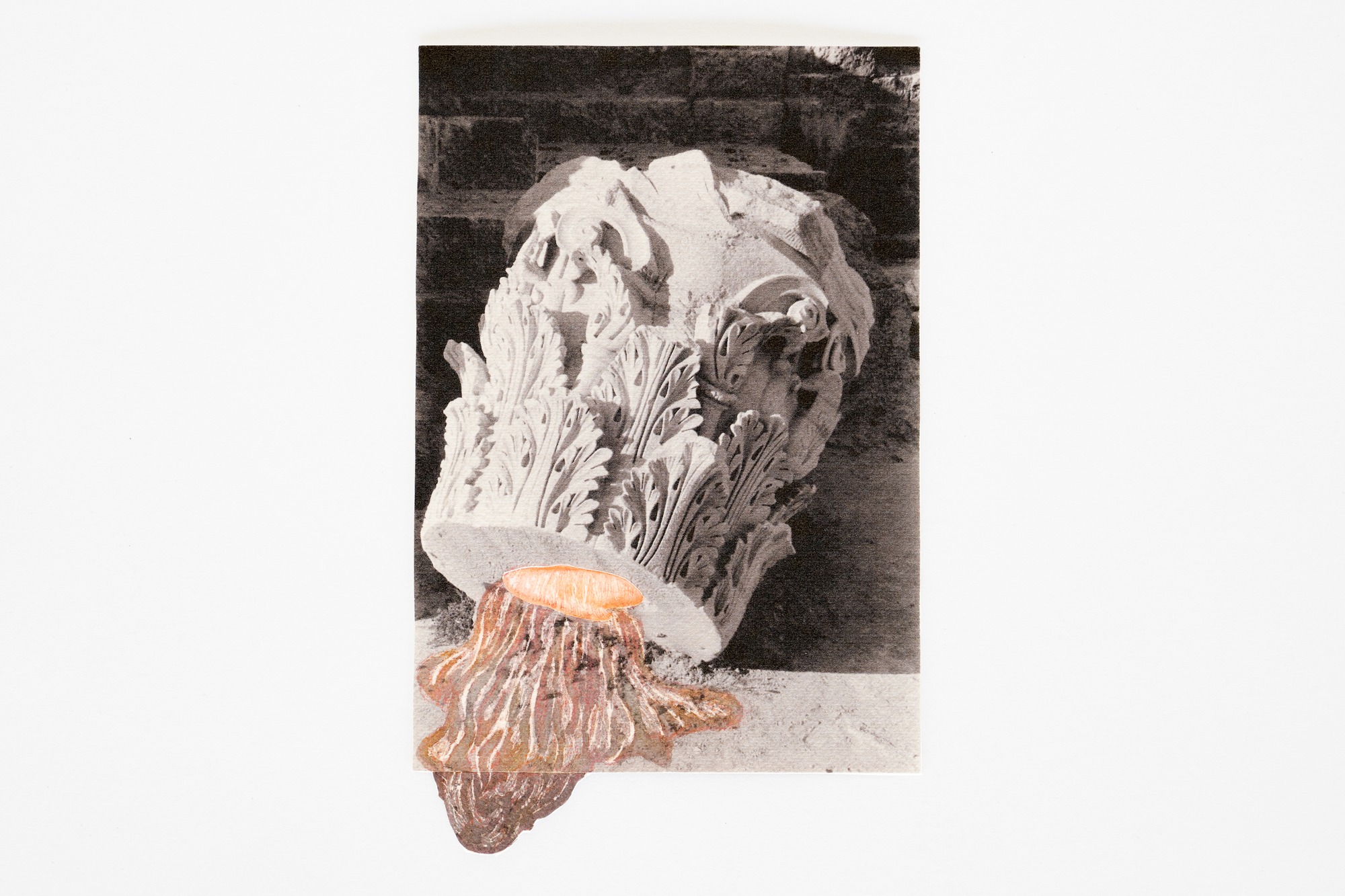Do Nothing, Feel Everything
18 Nov 2021 - 24 Apr 2022
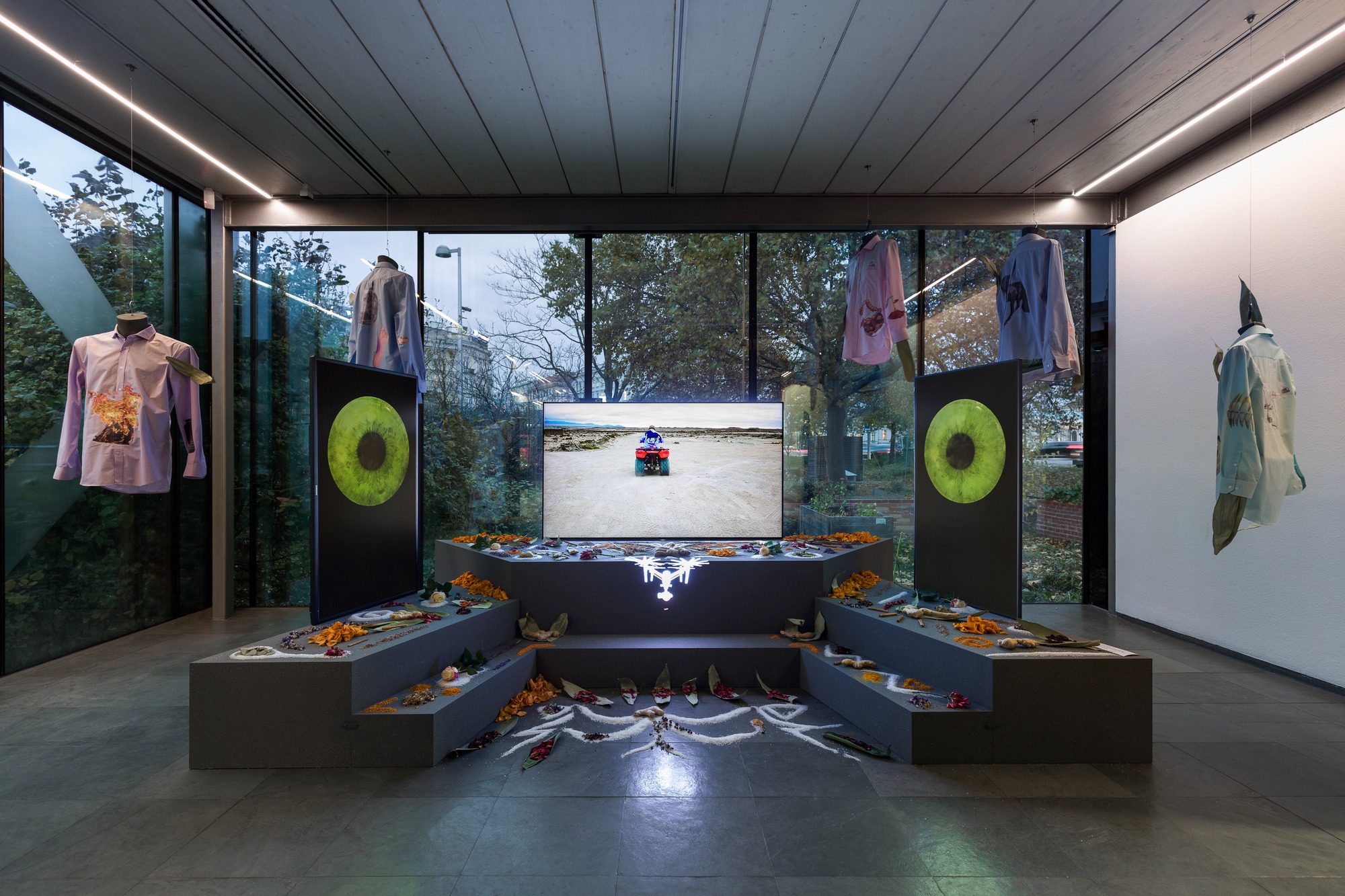
Installation view Do Nothing, Feel Everything: Patricia Domínguez, Green Irises, 2019, Kunsthalle Wien 2021, photo: www.kunst-dokumentation.com
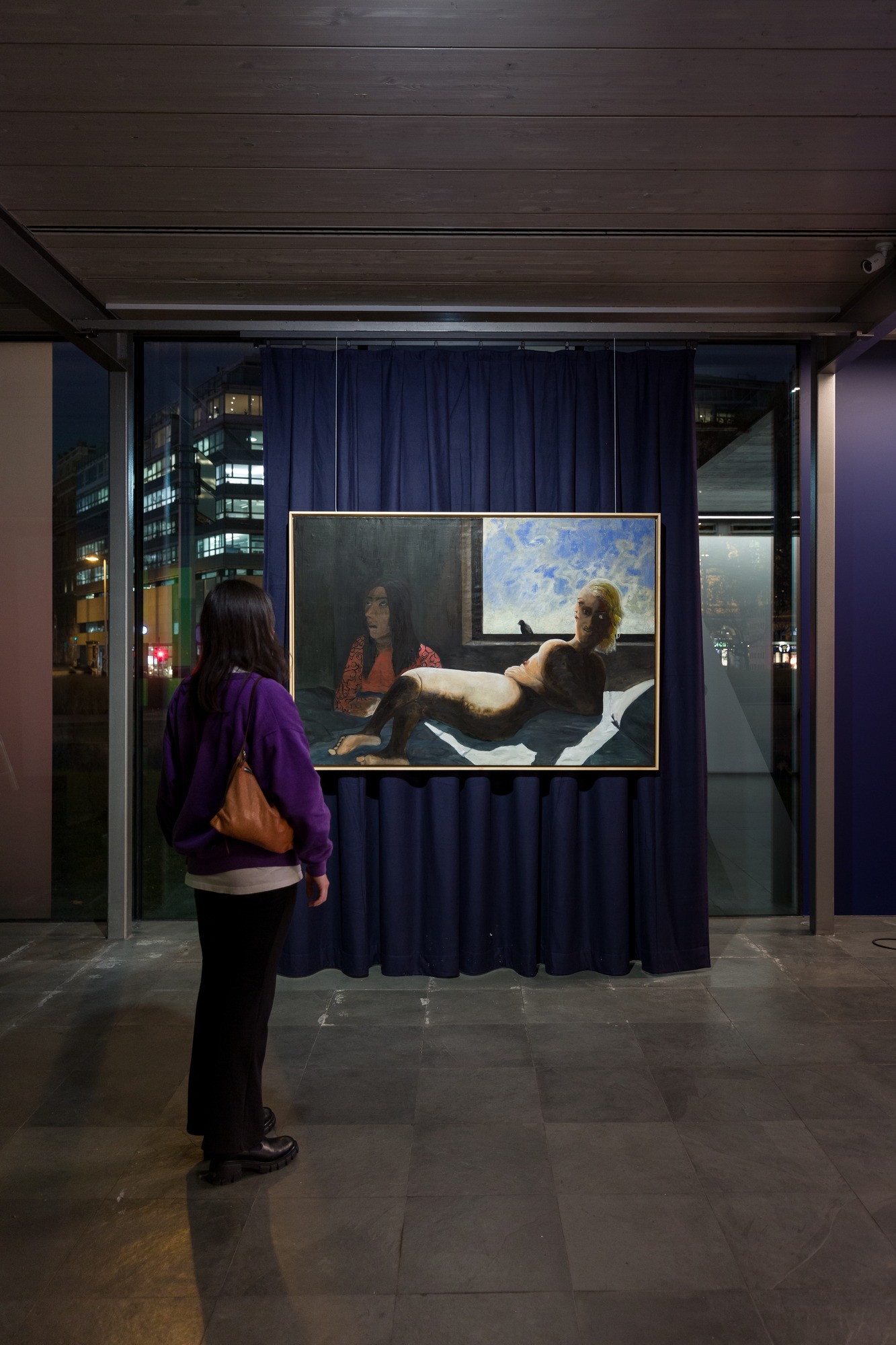
Installation view Do Nothing, Feel Everything: Stanislava Kovalcikova, Misty (Foggy), 2017, Kunsthalle Wien 2021, photo: www.kunst-dokumentation.com
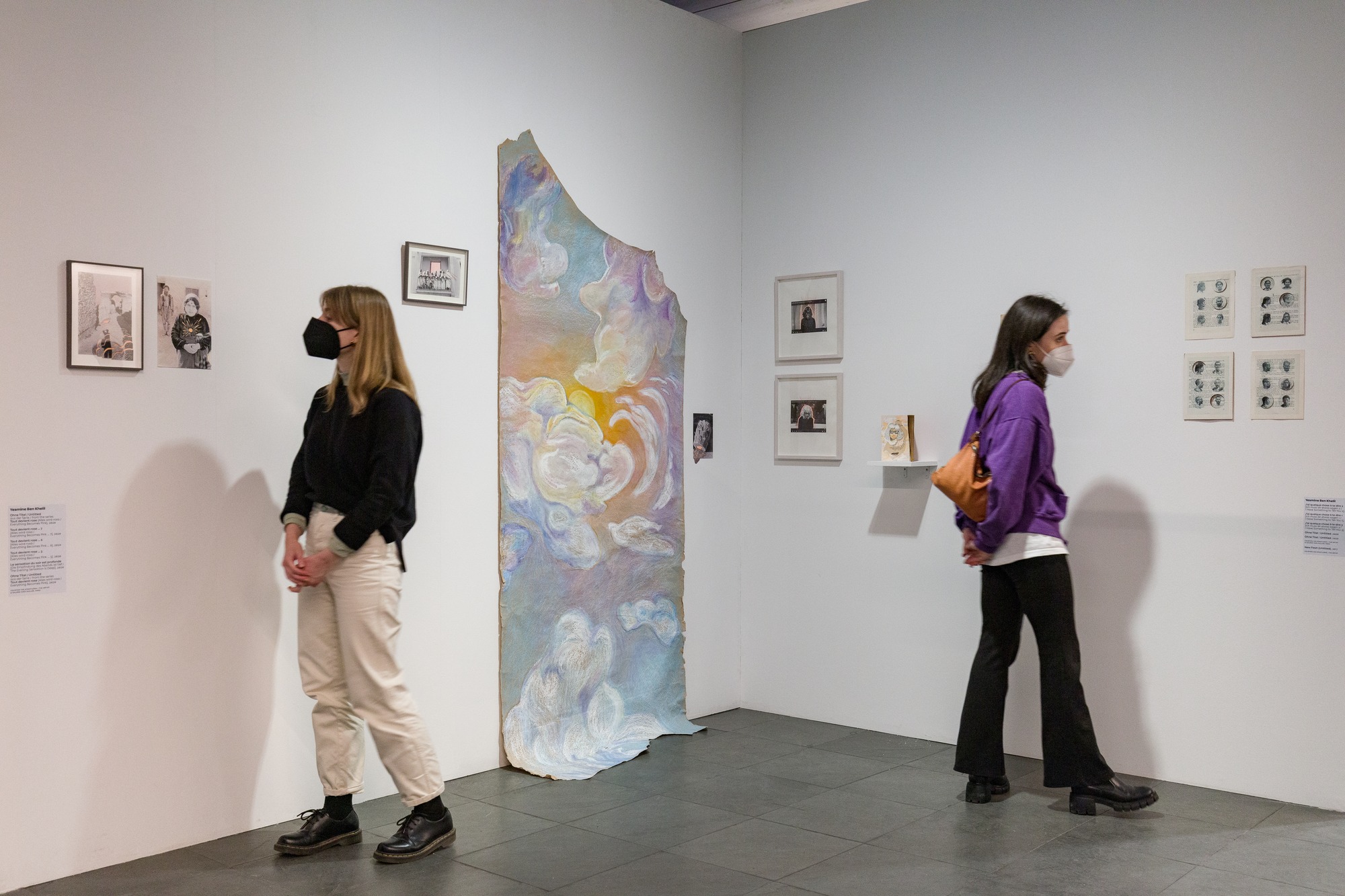
Installation view Do Nothing, Feel Everything with works by Yesmine Ben Khelil, Kunsthalle Wien 2021, photo: www.kunst-dokumentation.com
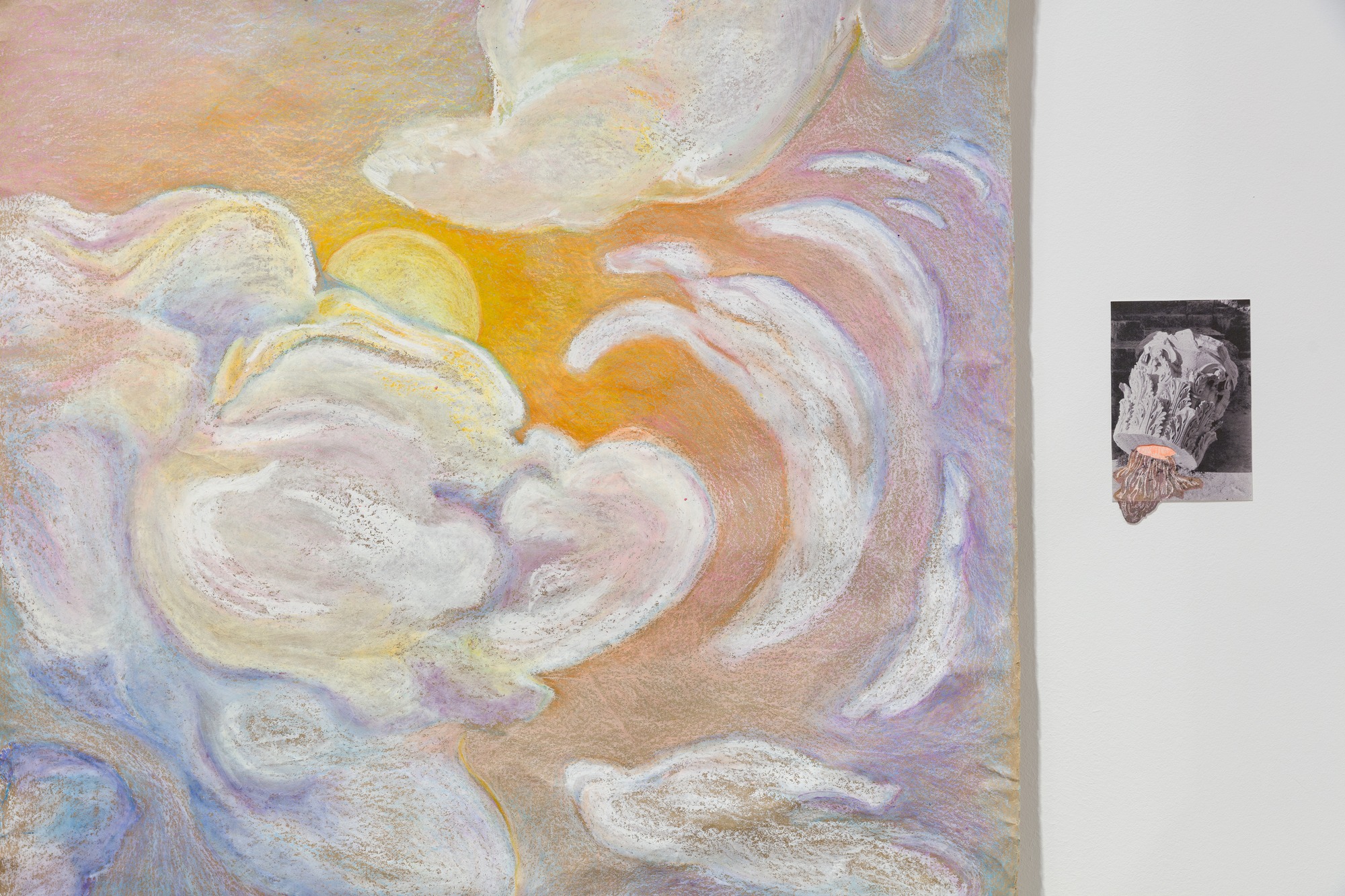
Installation view Do Nothing, Feel Everything with works by Yesmine Ben Khelil (detail), Kunsthalle Wien 2021, photo: www.kunst-dokumentation.com
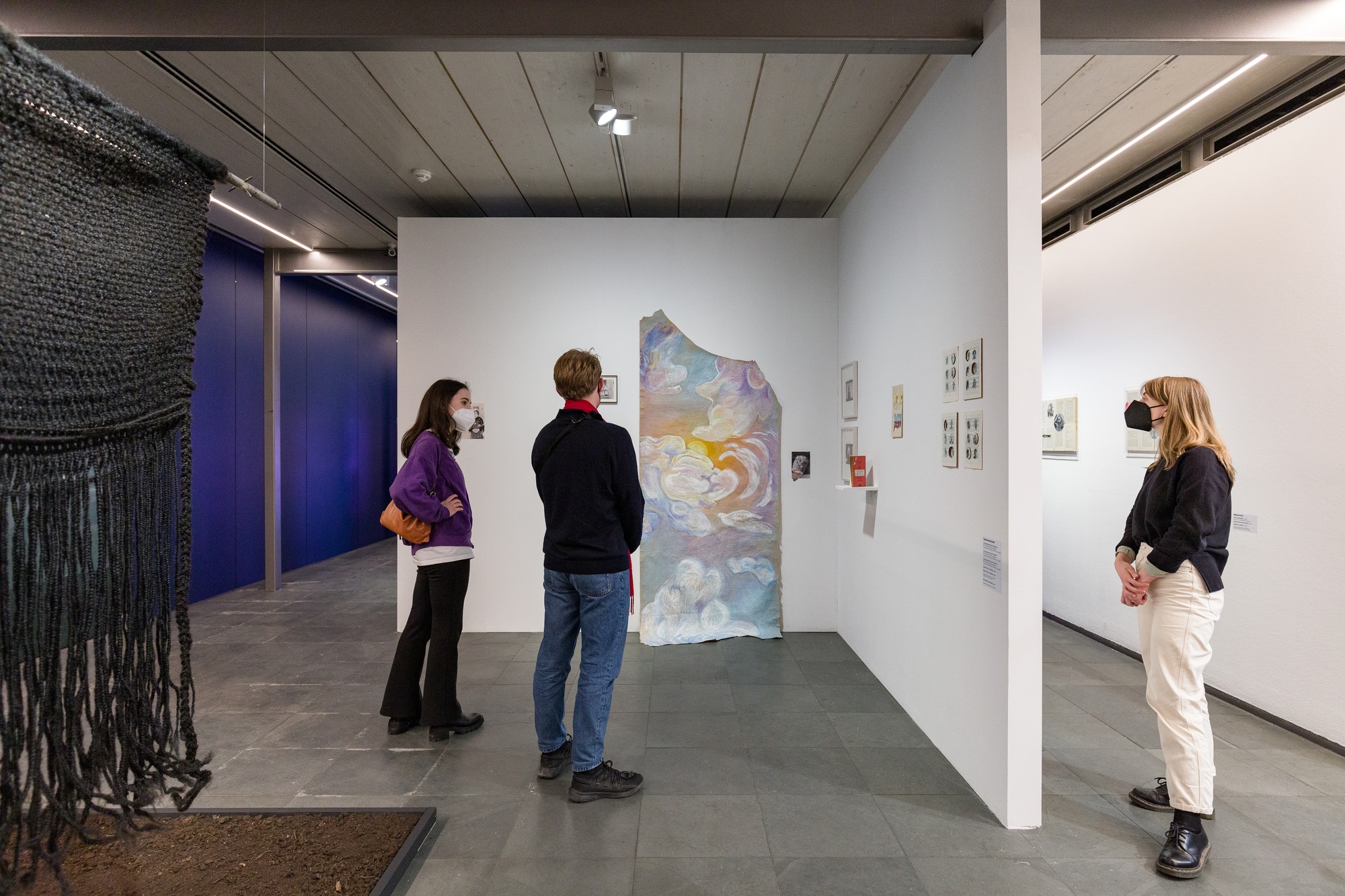
Installation view: Do Nothing, Feel Everything, Kunsthalle Wien 2021, photo: www.kunst-dokumentation.com
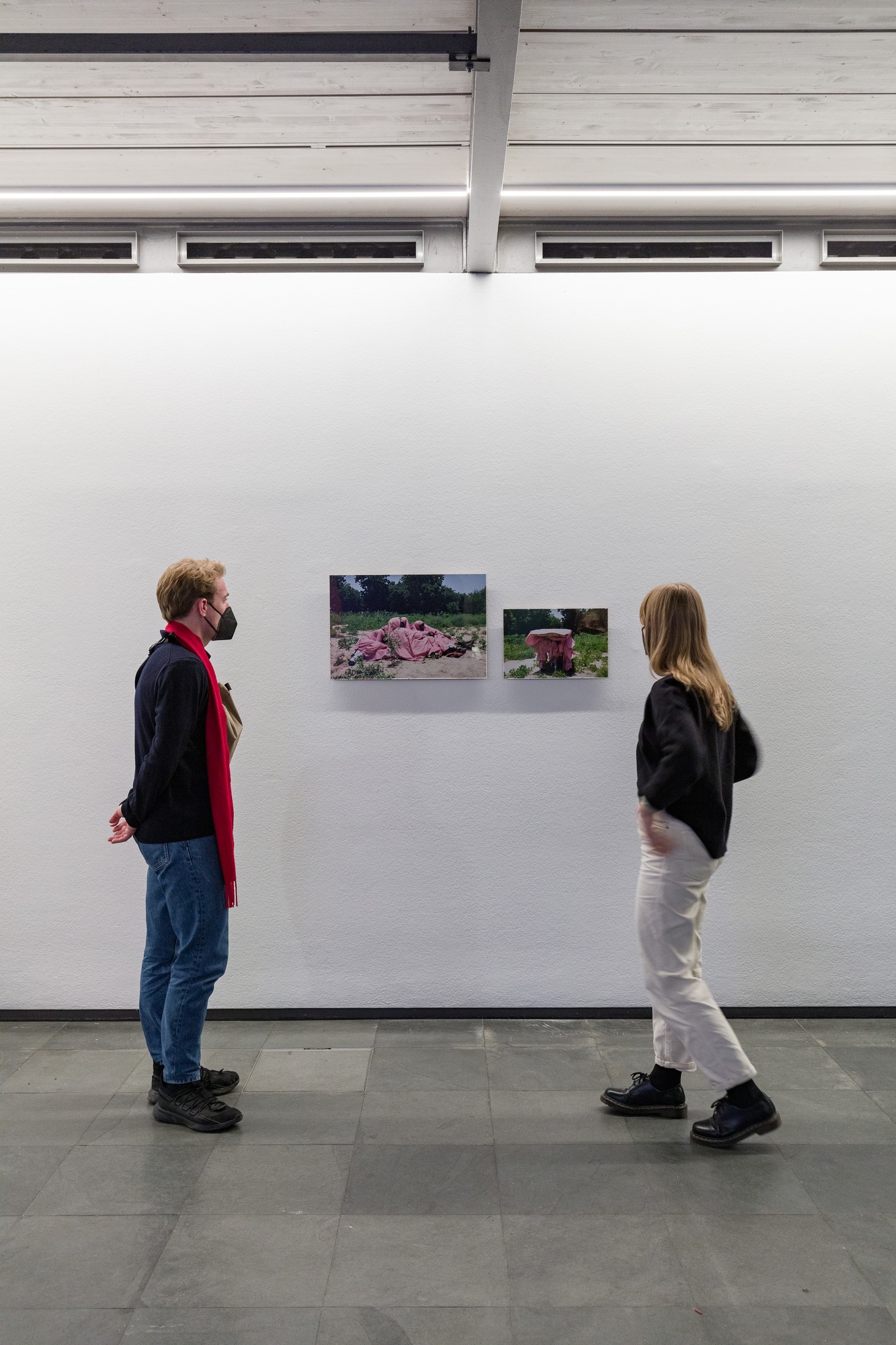
Installation view Do Nothing, Feel Everything with works by Rahima Gambo, Kunsthalle Wien 2021, photo: www.kunst-dokumentation.com
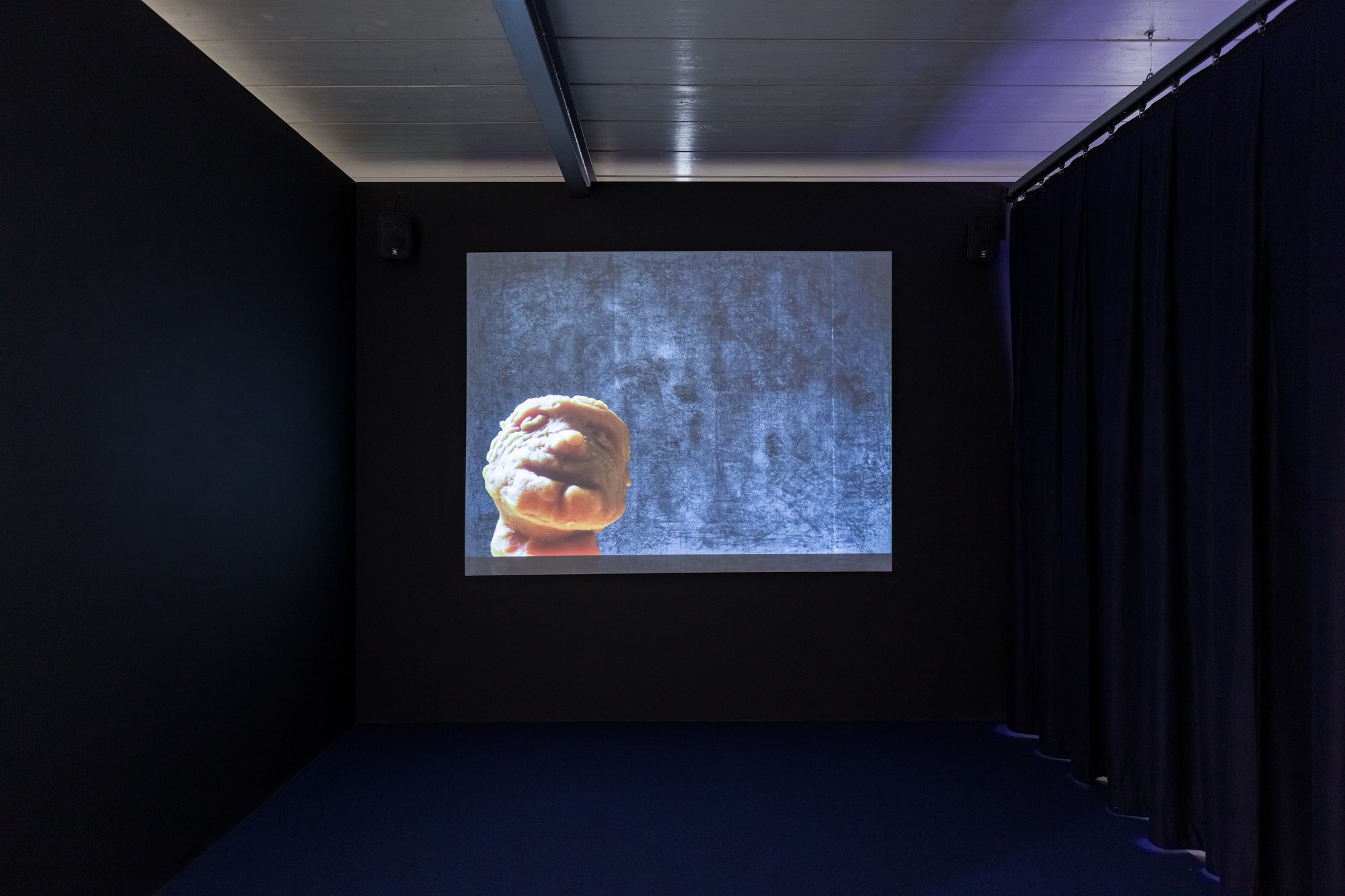
Installation view Do Nothing, Feel Everything: Niklas Lichti, Concrete Quarterly, 2020, Kunsthalle Wien 2021, photo: www.kunst-dokumentation.com
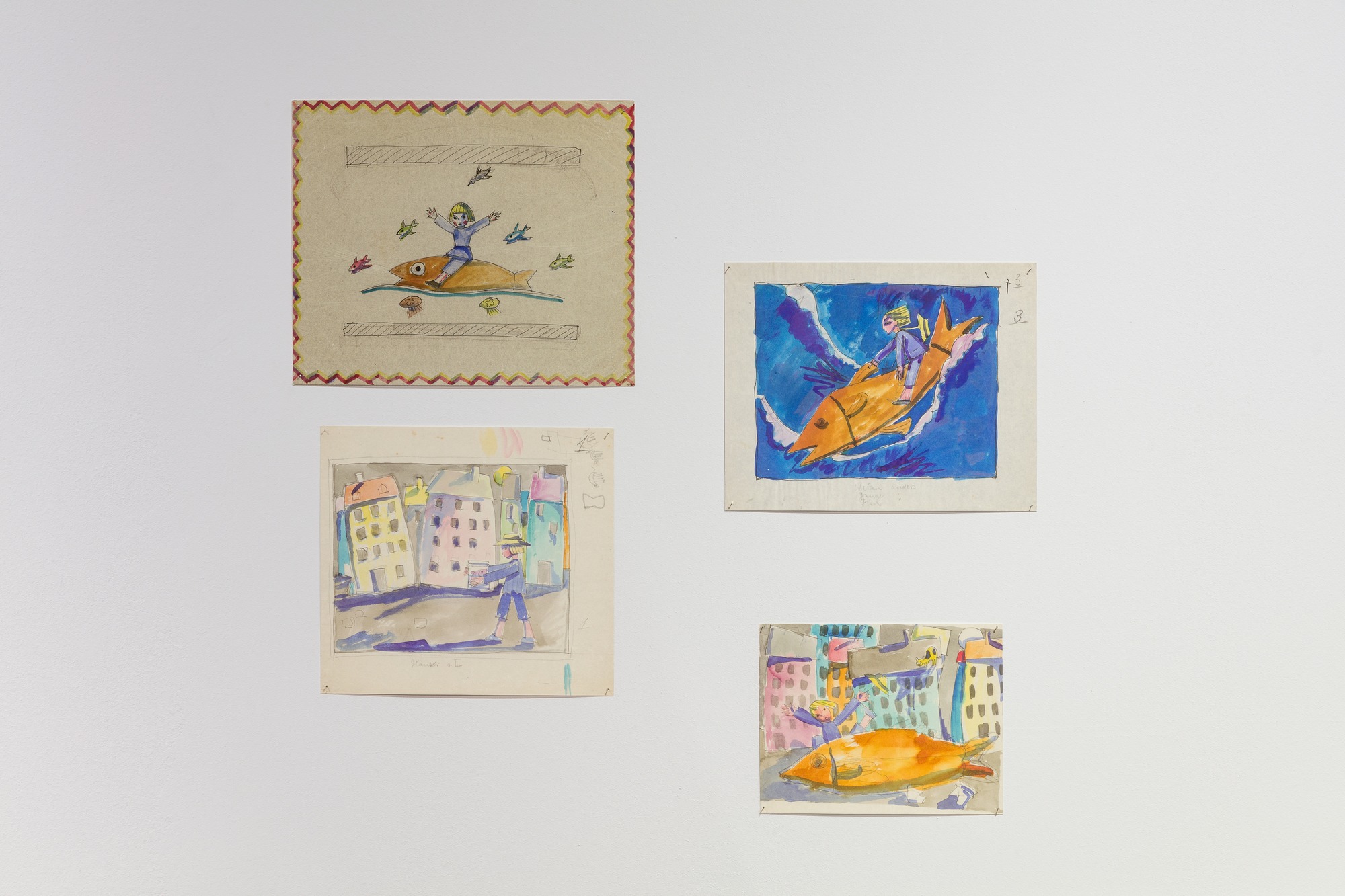
Installation view Do Nothing, Feel Everything with works by Tom Seidmann-Freud (detail), Kunsthalle Wien 2021, photo: www.kunst-dokumentation.com
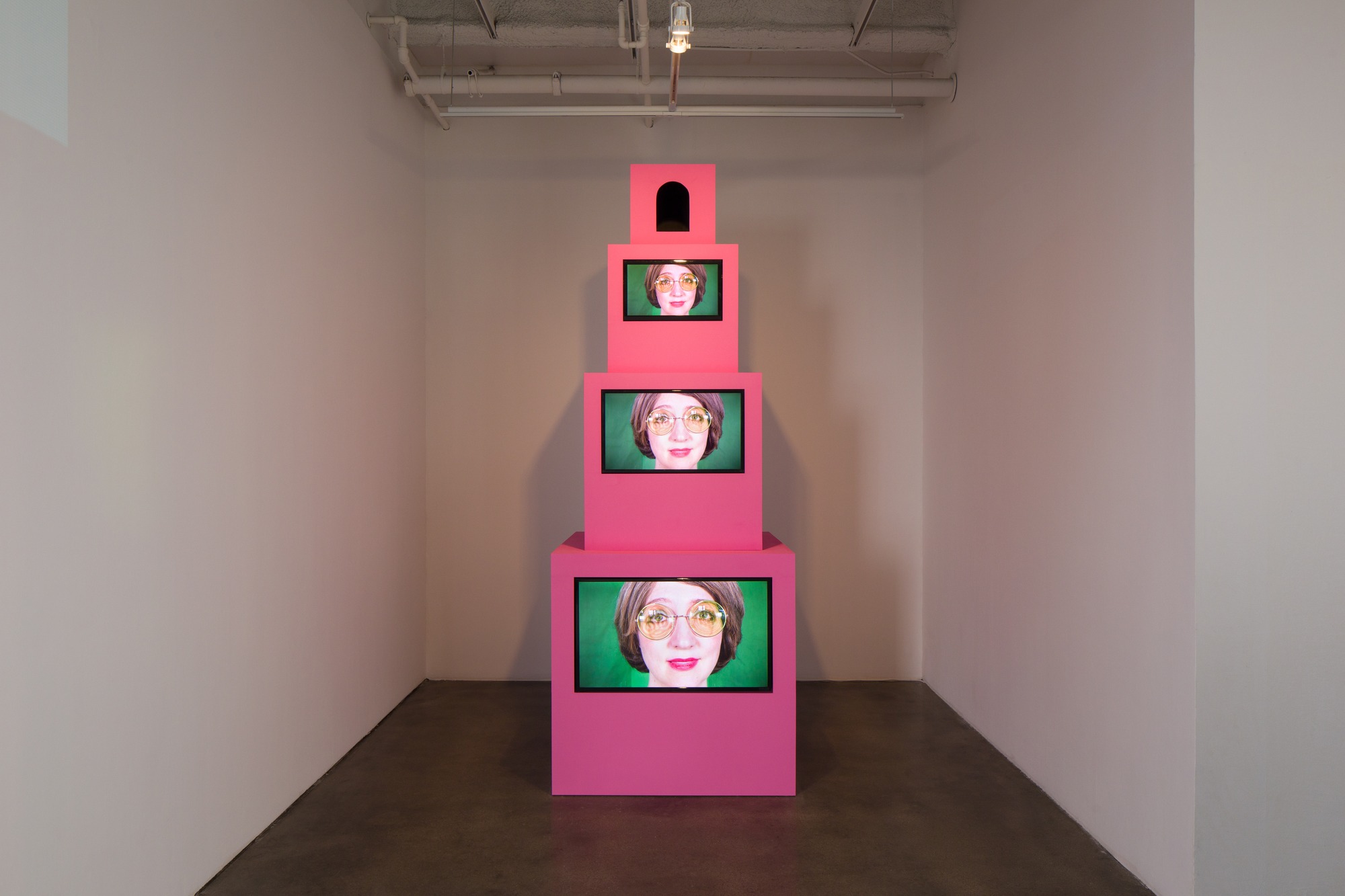
Shana Moulton, The Pink Tower, 2019. Exhibition view 'The Invisible Seventh is the Mystic Column', Museum of Contemporary Art Santa Barbara. Courtesy the artist and Galerie Gregor Staiger, Zurich. Photo: Alex Blair
Curators: Laura Amann and Aziza Harmel
Artists: Laila Bachtiar • Sophie Carapetian & Jakob Jakobsen • Tony Cokes • Henry Joseph Darger • Patricia Domínguez • Rahima Gambo • Yesmine Ben Khelil • Stanislava Kovalcikova • Niklas Lichti • Opoku Mensah • Shana Moulton • Tom Seidmann-Freud
The international group exhibition Do Nothing, Feel Everything sheds light on our current mode of crisis when every catastrophe, every threat is instantly overridden by another. Our physical and ental well-being is not an individual matter anymore but we were sharing a state of insanity before we even knew we were insane. Being in a state of constant emergency, often translated into apathy and exhaustion, makes passing through coherent stages of emotion impossible. In this sense, Do Nothing, Feel Everything is first of all an acceptance of this impossibility.
The title of this exhibition is originally borrowed from a commercial for tampons, except that the original slogan read: “Do Everything. Feel Nothing.” This promise of numbness is more than symptomatic of our times, but the attempt is, through the inversion of the slogan, to express—apart from demanding a different pace of life—a need for a different kind of space and time framework, in which it might be possible both to feel intensely and to process the emotional impact of what we all witness around us, following the temporality of the “neverending end of the world”.
Do Nothing, Feel Everything brings together works, commentaries, experiences, and concepts by artists of different generations. They speak of and with insanity, madness, paranoia, and other similar mechanisms commonly used to exclude. One of the starting points for curators Laura Amann and Aziza Harmel was the issue of madness and its relation to art history. The mad, the genius, was somehow always celebrated, but under the condition that such people would also bear the role of the “outsider”. If we think about Art Brut—a category that has become increasingly questioned in recent years—, for instance, it is still designated as “outsider” art. Considering the politics of access within the art world, this idea of “outsider” and “insider” art continuously holds meaning—and for cultural workers and artists the relation to those politics can only be paranoid, because they are based on hegemonic power dynamics.
Do Nothing, Feel Everything, however, focuses on art practices that distill substances from the objects of a culture—even a culture whose sworn desire has been to reject them. In that sense, these practices are reparative, because they reveal a will to reassemble something that will never be what it once was or what it could have been.
These notions of the “paranoid” and the “reparative” are informed by the work of gender and queer theorist Eve Kosofsky Sedgwick. Her writing was an important reference that allows to think about paranoia as a form of resistance and of repair as a coping and survival mechanism. As the curators put it in their introduction to the exhibition:
“It helped us make sense of what it means to make art while being an outsider of what we call ‚art history‘, and to make sense of what it means to work toward a change that you don’t believe will ever actually happen. In other words, the back and forth between these two epistemological systems—the reparative and the paranoid one—offers a way to navigate an understanding of insanity as the coexistence of contradictory knowledges within one mind. To consider paranoia as a form of knowledge is not about proving what we already feared we knew but rather knowing that we are seen differently and that we see differently.”
This epistemological shift from normative patterns of thought is the repair that Do Nothing, Feel Everything seeks to address. Healing is not about fixing what hegemonic culture has deemed broken or finding ways to make “broken things” function according to the society we currently live in. Rather, healing is, first of all, a process of soothing and bearing, but also of choosing how to soothe and to bear.
The works on display examine and present a wide range of affects, ambitions, and risks. Nevertheless, they are all attached to a project of survival—one that is as phantasmagorical as it is real. It is this coexistence of contradictory knowledges within oneself that is the only plausible path toward the bearable. Do Nothing, Feel Everything thus looks into art practices that understand insanity as a common condition and as a dynamic form of knowledge with something crucial at stake—art practices that, through careful bruising, find ways to soothe and to bear.
After its debut in kunsthalle wien, in spring 2022 the exhibition Do Nothing, Feel Everything will travel to its next stop – Kunsthalle Bratislava.
Artists‘ short biographies Laila Bachtiar Born in 1971, lives and works in Vienna Sophie Carapetian & Jakob Jakobsen Sophie Carapetian, born in 1979, lives and works in London Jakob Jakobsen, born in 1965, lives and works in Hospital for Self Medication Tony Cokes Born in 1956, lives and works in Providence (RI, USA) Henry Joseph Darger 1892–1973, lived and worked in Chicago (IL, USA) Patricia Domínguez Born in 1984, lives and works in Chile Rahima Gambo Born in 1986, lives and works in Abuja (Nigeria) and London Yesmine Ben Khelil Born in 1986, lives and works in Tunis (Tunisia) Stanislava Kovalcikova Born in 1988, lives and works in Dusseldorf Niklas Lichti Born in 1980, lives and works in Vienna Opoku Mensah Born in 1992, lives and works in Accra (Ghana) Shana Moulton Born in 1976, lives and works in New York and Santa Barbara (CA, USA) Tom Seidmann-Freud 1892–1930, lived and worked in Vienna and Berlin
Artists‘ short biographies
Laila Bachtiar
Born in 1971, lives and works in Vienna
Sophie Carapetian & Jakob Jakobsen
Sophie Carapetian, born in 1979, lives and works in London
Jakob Jakobsen, born in 1965, lives and works in Hospital for Self Medication
Tony Cokes
Born in 1956, lives and works in Providence (RI, USA)
Henry Joseph Darger
1892–1973, lived and worked in Chicago (IL, USA)
Patricia Domínguez
Born in 1984, lives and works in Chile
Rahima Gambo
Born in 1986, lives and works in Abuja (Nigeria) and London
Yesmine Ben Khelil
Born in 1986, lives and works in Tunis (Tunisia)
Stanislava Kovalcikova
Born in 1988, lives and works in Dusseldorf
Niklas Lichti
Born in 1980, lives and works in Vienna
Opoku Mensah
Born in 1992, lives and works in Accra (Ghana)
Shana Moulton
Born in 1976, lives and works in New York and Santa Barbara (CA, USA)
Tom Seidmann-Freud
1892–1930, lived and worked in Vienna and Berlin
Artists: Laila Bachtiar • Sophie Carapetian & Jakob Jakobsen • Tony Cokes • Henry Joseph Darger • Patricia Domínguez • Rahima Gambo • Yesmine Ben Khelil • Stanislava Kovalcikova • Niklas Lichti • Opoku Mensah • Shana Moulton • Tom Seidmann-Freud
The international group exhibition Do Nothing, Feel Everything sheds light on our current mode of crisis when every catastrophe, every threat is instantly overridden by another. Our physical and ental well-being is not an individual matter anymore but we were sharing a state of insanity before we even knew we were insane. Being in a state of constant emergency, often translated into apathy and exhaustion, makes passing through coherent stages of emotion impossible. In this sense, Do Nothing, Feel Everything is first of all an acceptance of this impossibility.
The title of this exhibition is originally borrowed from a commercial for tampons, except that the original slogan read: “Do Everything. Feel Nothing.” This promise of numbness is more than symptomatic of our times, but the attempt is, through the inversion of the slogan, to express—apart from demanding a different pace of life—a need for a different kind of space and time framework, in which it might be possible both to feel intensely and to process the emotional impact of what we all witness around us, following the temporality of the “neverending end of the world”.
Do Nothing, Feel Everything brings together works, commentaries, experiences, and concepts by artists of different generations. They speak of and with insanity, madness, paranoia, and other similar mechanisms commonly used to exclude. One of the starting points for curators Laura Amann and Aziza Harmel was the issue of madness and its relation to art history. The mad, the genius, was somehow always celebrated, but under the condition that such people would also bear the role of the “outsider”. If we think about Art Brut—a category that has become increasingly questioned in recent years—, for instance, it is still designated as “outsider” art. Considering the politics of access within the art world, this idea of “outsider” and “insider” art continuously holds meaning—and for cultural workers and artists the relation to those politics can only be paranoid, because they are based on hegemonic power dynamics.
Do Nothing, Feel Everything, however, focuses on art practices that distill substances from the objects of a culture—even a culture whose sworn desire has been to reject them. In that sense, these practices are reparative, because they reveal a will to reassemble something that will never be what it once was or what it could have been.
These notions of the “paranoid” and the “reparative” are informed by the work of gender and queer theorist Eve Kosofsky Sedgwick. Her writing was an important reference that allows to think about paranoia as a form of resistance and of repair as a coping and survival mechanism. As the curators put it in their introduction to the exhibition:
“It helped us make sense of what it means to make art while being an outsider of what we call ‚art history‘, and to make sense of what it means to work toward a change that you don’t believe will ever actually happen. In other words, the back and forth between these two epistemological systems—the reparative and the paranoid one—offers a way to navigate an understanding of insanity as the coexistence of contradictory knowledges within one mind. To consider paranoia as a form of knowledge is not about proving what we already feared we knew but rather knowing that we are seen differently and that we see differently.”
This epistemological shift from normative patterns of thought is the repair that Do Nothing, Feel Everything seeks to address. Healing is not about fixing what hegemonic culture has deemed broken or finding ways to make “broken things” function according to the society we currently live in. Rather, healing is, first of all, a process of soothing and bearing, but also of choosing how to soothe and to bear.
The works on display examine and present a wide range of affects, ambitions, and risks. Nevertheless, they are all attached to a project of survival—one that is as phantasmagorical as it is real. It is this coexistence of contradictory knowledges within oneself that is the only plausible path toward the bearable. Do Nothing, Feel Everything thus looks into art practices that understand insanity as a common condition and as a dynamic form of knowledge with something crucial at stake—art practices that, through careful bruising, find ways to soothe and to bear.
After its debut in kunsthalle wien, in spring 2022 the exhibition Do Nothing, Feel Everything will travel to its next stop – Kunsthalle Bratislava.
Artists‘ short biographies Laila Bachtiar Born in 1971, lives and works in Vienna Sophie Carapetian & Jakob Jakobsen Sophie Carapetian, born in 1979, lives and works in London Jakob Jakobsen, born in 1965, lives and works in Hospital for Self Medication Tony Cokes Born in 1956, lives and works in Providence (RI, USA) Henry Joseph Darger 1892–1973, lived and worked in Chicago (IL, USA) Patricia Domínguez Born in 1984, lives and works in Chile Rahima Gambo Born in 1986, lives and works in Abuja (Nigeria) and London Yesmine Ben Khelil Born in 1986, lives and works in Tunis (Tunisia) Stanislava Kovalcikova Born in 1988, lives and works in Dusseldorf Niklas Lichti Born in 1980, lives and works in Vienna Opoku Mensah Born in 1992, lives and works in Accra (Ghana) Shana Moulton Born in 1976, lives and works in New York and Santa Barbara (CA, USA) Tom Seidmann-Freud 1892–1930, lived and worked in Vienna and Berlin
Artists‘ short biographies
Laila Bachtiar
Born in 1971, lives and works in Vienna
Sophie Carapetian & Jakob Jakobsen
Sophie Carapetian, born in 1979, lives and works in London
Jakob Jakobsen, born in 1965, lives and works in Hospital for Self Medication
Tony Cokes
Born in 1956, lives and works in Providence (RI, USA)
Henry Joseph Darger
1892–1973, lived and worked in Chicago (IL, USA)
Patricia Domínguez
Born in 1984, lives and works in Chile
Rahima Gambo
Born in 1986, lives and works in Abuja (Nigeria) and London
Yesmine Ben Khelil
Born in 1986, lives and works in Tunis (Tunisia)
Stanislava Kovalcikova
Born in 1988, lives and works in Dusseldorf
Niklas Lichti
Born in 1980, lives and works in Vienna
Opoku Mensah
Born in 1992, lives and works in Accra (Ghana)
Shana Moulton
Born in 1976, lives and works in New York and Santa Barbara (CA, USA)
Tom Seidmann-Freud
1892–1930, lived and worked in Vienna and Berlin

